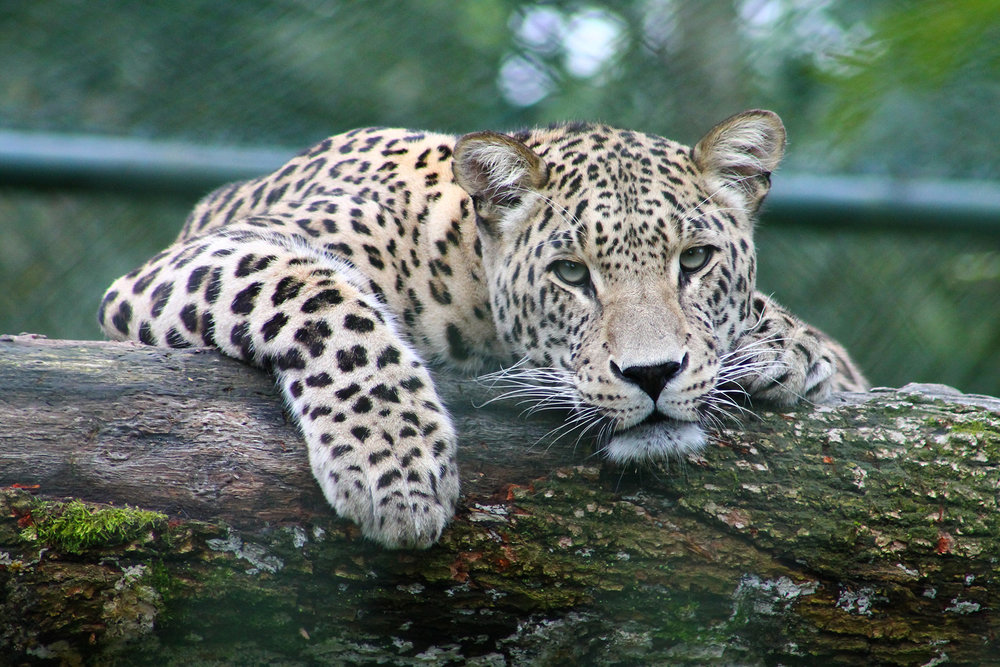Persian leopard to receive artificial insemination next week

TEHRAN – For the first time, a Persian leopard will undergo artificial insemination in Tehran Zoological Garden next week.
“The precious female leopard has lost a hand being injured in a hunting trap in Golestan province, who is being kept in the Garden,” Mehr quoted Iman Memarian, Tehran Zoological Garden director, as saying on Monday.
Referring to European Endangered Species Programs (EEP), he noted that EEP is a population management program aiming at endangered species reproduction by the European Association of Zoos and Aquaria (EAZA).
“A captive breeding program has been established for the Persian leopard along with the EEP,” he added.
For artificial insemination, sperm of a male leopard named ‘Rika’ is being kept in liquid nitrogen, he said, adding, also a male leopard has been sent to the Garden from Portugal through the EEP, which can help the process.
Memarian went on to say that German experts are lending a hand in implementing the artificial insemination techniques.
In the field of artificial insemination for the Persian leopard, there have been very few successes in only one of the zoos worldwide, which is cooperating with us in this regard, he stated implying that there is hope that we will achieve successful results for the first time in Iran and in the region.
He further highlighted that Tehran Zoological Garden can become a source of Persian leopard gene in the world in addition to the country, which requires cooperation of all the related organizations.
Responding to the artificial insemination of Persian leopard in Tehran success rate, Memarian noted that while there are only few attempts resulting in successful insemination in the world, we will try hard to achieve the best results using all capacities and facilities.
The Persian leopard is listed as Endangered on the International Union for Conservation of Nature (IUCN) Red List; the population is estimated at fewer than 871–1,290 mature individuals and considered declining.
According to the Department of Environment, 156 leopards have been killed in Iran from 2005 to 2014, nearly 20 leopards a year. Studies indicate that currently there are less than 500 leopards nationwide.
The Persian leopard was most likely distributed over the whole Caucasus, except for steppe areas. During surveys conducted between 2001 and 2005 no leopard was recorded in the western part of the Greater Caucasus; it probably survived only at a few sites in the eastern part. The largest population survives in Iran.
Leopards are more abundant in the northern part of the country. During surveys conducted between 2002 and 2011, they were found in 74 protected and non-protected areas, of which 69 percent are located in northern Iran.
They are mainly found in the Alborz and the Zagros mountain ranges and throughout the northwestern region, which crosses these mountain chains. The Hyrcanian forests located in the north and along the Alborz mountain chain are considered as one of the most important habitats for leopards in the country.
Persian leopards are mainly threatened by poaching, depletion of their prey base due to poaching, human disturbances, habitat loss due to deforestation, fire, agricultural expansion, overgrazing, and infrastructure development.
In Iran, primary threats are habitat disturbances followed by illegal hunting and excess of livestock in the leopard habitats. The leopards’ chances for survival outside protected areas appear very slim.
In September 2018, three leopards for the first time were spotted at the Bakhtegan national park in Neyriz city located in southern Fars province.
Moreover, In October, a leopard was spotted for the third time within two years in Taleqan, a rural district located in Alborz province, north-central part of the country.
In January 2017, locals took pictures of a leopard in the protected area of Taleqan for the first time, and a year later a leopard footprint was spotted.
FB/MG
